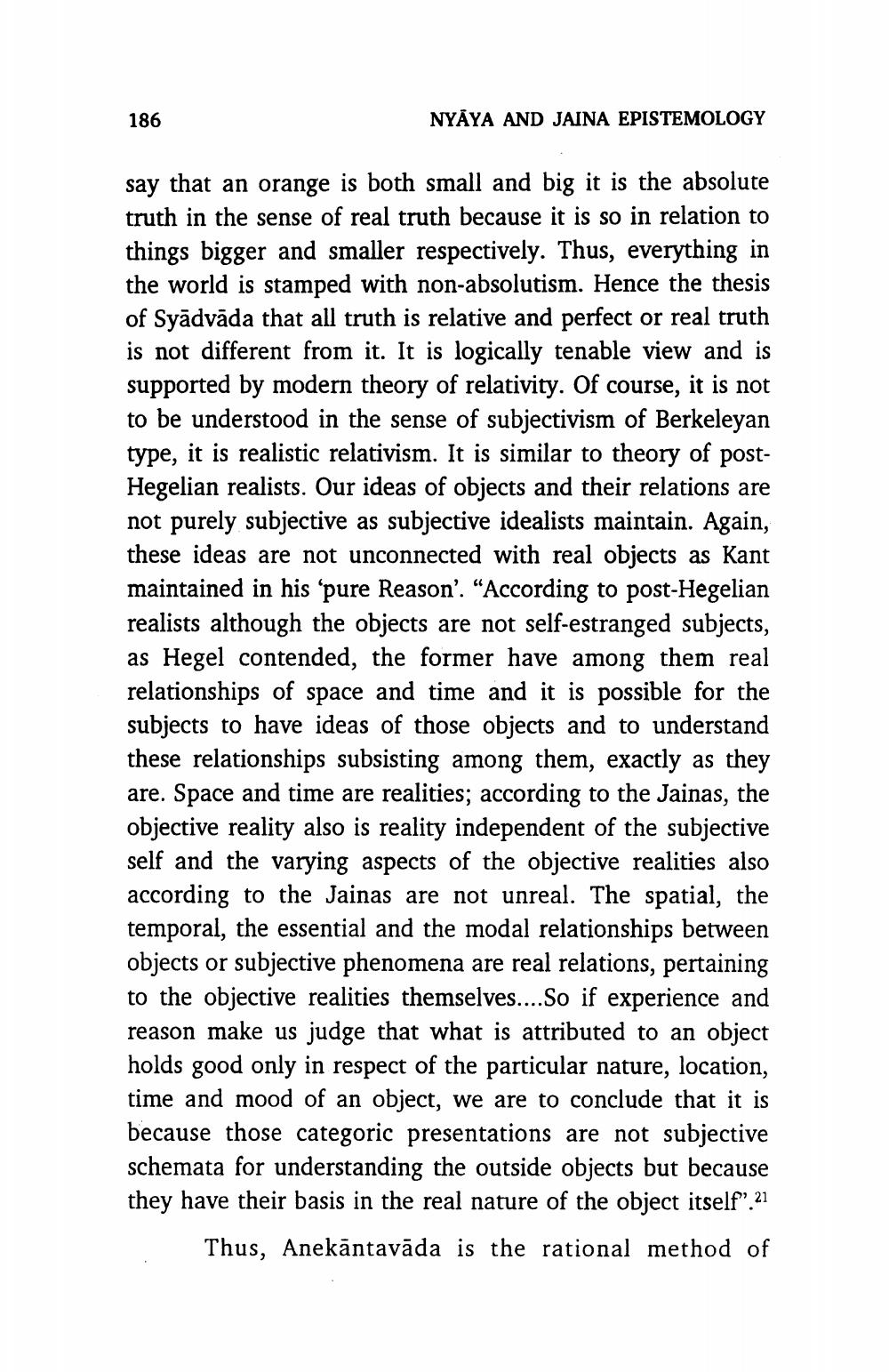________________
186
NYAYA AND JAINA EPISTEMOLOGY
say that an orange is both small and big it is the absolute truth in the sense of real truth because it is so in relation to things bigger and smaller respectively. Thus, everything in the world is stamped with non-absolutism. Hence the thesis of Syādvāda that all truth is relative and perfect or real truth is not different from it. It is logically tenable view and is supported by modern theory of relativity. Of course, it is not to be understood in the sense of subjectivism of Berkeleyan type, it is realistic relativism. It is similar to theory of postHegelian realists. Our ideas of objects and their relations are not purely subjective as subjective idealists maintain. Again, these ideas are not unconnected with real objects as Kant maintained in his ‘pure Reason'. “According to post-Hegelian realists although the objects are not self-estranged subjects, as Hegel contended, the former have among them real relationships of space and time and it is possible for the subjects to have ideas of those objects and to understand these relationships subsisting among them, exactly as they are. Space and time are realities, according to the Jainas, the objective reality also is reality independent of the subjective self and the varying aspects of the objective realities also according to the Jainas are not unreal. The spatial, the temporal, the essential and the modal relationships between objects or subjective phenomena are real relations, pertaining to the objective realities themselves....So if experience and reason make us judge that what is attributed to an object holds good only in respect of the particular nature, location, time and mood of an object, we are to conclude that it is because those categoric presentations are not subjective schemata for understanding the outside objects but because they have their basis in the real nature of the object itself”.21
Thus, Anekāntavāda is the rational method of




